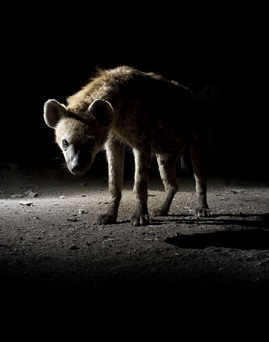Hyenas' microbial messages, written in stink
 Zoologists have discovered the incredible complexity of messages left by hyenas in the form of smelly post-it notes.
Zoologists have discovered the incredible complexity of messages left by hyenas in the form of smelly post-it notes.
A new study has found that hyenas are able to leave incredibly detailed packets of information for their peers by depositing their scent on grass and plants.
It turns out that the paste hyenas use to mark where they have been is full of symbiotic bacteria, each with its own odour, which can communicate important information about the surrounding area.
“When hyenas leave paste deposits on grass, the sour-smelling signals relay reams of information for other animals to read,” said Kevin Theis, lead author of a new paper published in the Proceedings of the National Academy of Sciences.
“Scent posts are bulletin boards, pastes are business cards, and bacteria are the ink, shaped into letters and words that provide information about the paster to the boards' visitors.”
“Hyenas can leave a quick, detailed message and go. It's like a bulletin board of who's around and how they're doing,” Theis said.
Researchers took high definition molecular surveys of scent posts, finding that there is an incredibly diverse array of microbes within the hyenas’ scent glands.
The diversity varied consistently within different hyena species, and with sex and reproductive state.
The significant variation in scent gland bacterial communities was strongly correlated with variation in the glands’ odour profiles, suggesting that bacteria were responsible for the variation in scent.
In the new paper, the team from Michigan State University became the first to combine microbial surveys and complementary odour data from wild animals. The findings have left Theis keen to get back into the field.
“Now I just need to get back into the field to test new predictions generated by this study... the next phase of this research will be to manipulate the bacterial communities in hyenas' scent glands to test if their odours change in predictable ways.”
A team from the same university is now conducting a similar test on the microbial communications of birds.







 Print
Print